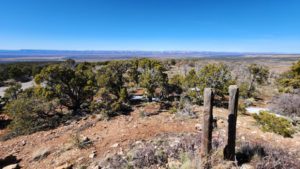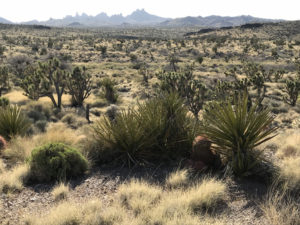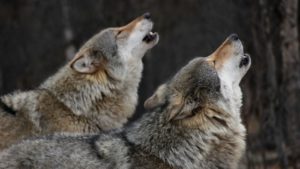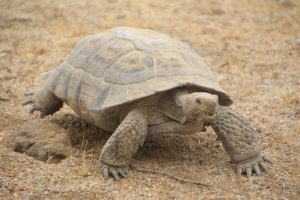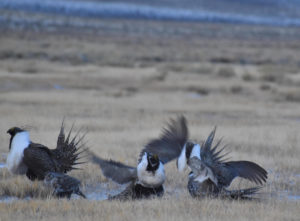FOR IMMEDIATE RELEASE
July 31, 2020
Media contacts:
Felice Pace, The Grazing Reform Project: (707) 954-6588, unofelice@gmail.com
Laura Cunningham, Western Watersheds Project: (775) 513-1280,
lcunningham@westernwatersheds.
Tom Wheeler, Environmental Protection Information Center: (206) 356-8689, tom@wildcalifornia.org
Siskiyou Crest, Calif. – The Klamath Mountains of northern California and southern Oregon are a global center of biodiversity and endemic species. The area harbors one of the richest temperate coniferous forests in the world, with complex geology and topography, diverse meadows, and over 3,500 plant species. Native fish fauna here is numerous, but is chronically under threat from excessive and uncontrolled cattle grazing. On July 30th local and regional conservation groups objected to a decision by Forest Service managers to reauthorize grazing within the Klamath River’s Beaver Creek watershed.
The Grazing Reform Project, Western Watersheds Project, and Environmental Protection Information Center filed an “Objection” because the decision to reauthorize grazing, if it is implemented, will result in unacceptable damage to Critical Habitat for Coho salmon and will continue unacceptable damage to riparian areas, wetlands, and water quality in headwater basins of the Klamath and Applegate Rivers.
Degradation of Critical Habitat for Coho salmon occurs because grazing in the Klamath’s Beaver Creek watershed begins in springtime at low elevation. As they move to higher ground, poorly managed cattle trample streambanks along Beaver Creek and its tributaries, remove vegetation that provides shade and deposit their waste into streams and onto streambanks, degrading habitat that has been designated “critical” to the survival of Coho Salmon pursuant to the federal Endangered Species Act.
Laura Cunningham, California Director for Western Watersheds Project (WWP), questioned why Forest Service managers are allowing cattle to degrade Coho Critical Habitat: “We can’t recover Coho salmon and all the benefits they bring to river and coastal communities if we allow cattle to trample their habitat, degrade water quality with fecal waste and remove willows and other shade plants which keeps the water cool,” she said. “By reauthorizing grazing without requiring adequate herding, the Forest Service is prioritizing the income of a few ranchers over the many economic and social benefits that accompany healthy salmon populations. That is not only wrong, it is illegal.”
According to the three groups objecting, the Forest Service decision to reauthorize grazing also fails to adequately address damage that poorly managed grazing has caused along the Siskiyou Crest, which forms the border between the Klamath and Rogue River-Siskiyou National Forests. Decades of cattle trespass across the Siskiyou Crest between Forests, combined with poor grazing management, has resulted in too many cattle grazing in sensitive headwater wetlands and riparian areas.
For the past seven years, volunteers with the Grazing Reform Project (GRP) have documented the damage and have supplied that documentation to Forest Service managers along with recommendations for how to improve grazing management. GRP Coordinator Felice Pace explained how those reports and recommendations have been received by Forest Service managers: “For the past seven years, Forest Service officials responsible for managing grazing on the Klamath and Rogue River-Siskiyou National Forests have ignored our recommendations for how to reduce grazing-caused degradation. Now they seek to reauthorize the same grazing practices that degrade headwater basins, which should be producing the highest quality water for communities and fisheries downstream, but which instead are fouling those streams and rivers with cattle feces and fine sediment from streambank trampling.”
Tom Wheeler, executive director for the Environmental Protection Information Center (EPIC) summed up why the organizations challenged the decision to reauthorize grazing in the Beaver Creek Watershed: “We are unwilling to accept the poor performance of Forest Service managers and the resulting degradation, and that’s why we filed our Objection. We know Forest Service managers can do better. The public, downstream communities and our salmon deserve responsible grazing management on public land.”
<<<<<<<>>>>>>>
Documentation Available for Press Use
Read or download a copy of our “Objection” here. Seven photo-illustrated reports on Siskiyou Crest grazing and conditions on the East Beaver Allotment can be read and downloaded here.
The link to a map showing the extent of Coho Critical Habitat within the East Beaver Grazing Allotment and nearby allotments is available here.
The need for implementing modern grazing management, including rest rotation grazing, fencing and regular herding to prevent riparian, and wetland and water quality degradation, is confirmed by the University of California (UC), plenty of other research and experience on the ground. Here is a link to the UC Rangeland website on riparian and meadow grazing.
UC Rangelands gives the “management implications” of their research: “Management of livestock distribution is a critical management activity to enhance and sustain riparian health in mountain meadow grazing systems. Simple distribution tools such as herding, salting, and off-stream water are effective for protecting riparian areas, but management effort must be invested to assure success.”
<<<<<<<>>>>>>>

